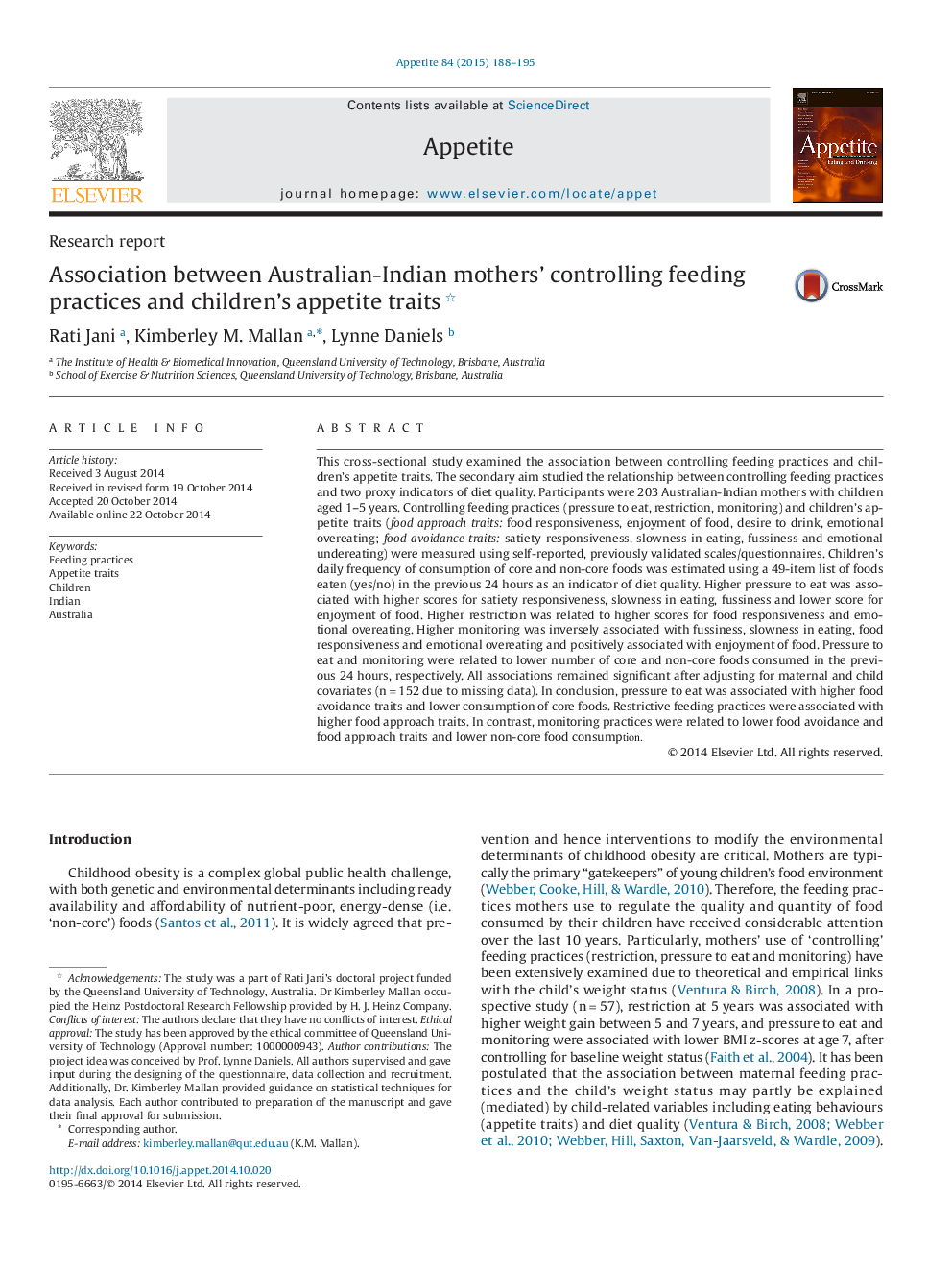| کد مقاله | کد نشریه | سال انتشار | مقاله انگلیسی | نسخه تمام متن |
|---|---|---|---|---|
| 7309718 | 1475396 | 2015 | 8 صفحه PDF | دانلود رایگان |
عنوان انگلیسی مقاله ISI
Association between Australian-Indian mothers' controlling feeding practices and children's appetite traits
ترجمه فارسی عنوان
ارتباط مادران استرالیایی و هند با کنترل تغذیه و ویژگی های اشتها کودکان
دانلود مقاله + سفارش ترجمه
دانلود مقاله ISI انگلیسی
رایگان برای ایرانیان
کلمات کلیدی
شیوه های تغذیه، صفات اشتها، فرزندان، هندی، استرالیا،
موضوعات مرتبط
علوم زیستی و بیوفناوری
علوم کشاورزی و بیولوژیک
دانش تغذیه
چکیده انگلیسی
This cross-sectional study examined the association between controlling feeding practices and children's appetite traits. The secondary aim studied the relationship between controlling feeding practices and two proxy indicators of diet quality. Participants were 203 Australian-Indian mothers with children aged 1-5 years. Controlling feeding practices (pressure to eat, restriction, monitoring) and children's appetite traits (food approach traits: food responsiveness, enjoyment of food, desire to drink, emotional overeating; food avoidance traits: satiety responsiveness, slowness in eating, fussiness and emotional undereating) were measured using self-reported, previously validated scales/questionnaires. Children's daily frequency of consumption of core and non-core foods was estimated using a 49-item list of foods eaten (yes/no) in the previous 24 hours as an indicator of diet quality. Higher pressure to eat was associated with higher scores for satiety responsiveness, slowness in eating, fussiness and lower score for enjoyment of food. Higher restriction was related to higher scores for food responsiveness and emotional overeating. Higher monitoring was inversely associated with fussiness, slowness in eating, food responsiveness and emotional overeating and positively associated with enjoyment of food. Pressure to eat and monitoring were related to lower number of core and non-core foods consumed in the previous 24 hours, respectively. All associations remained significant after adjusting for maternal and child covariates (nâ=â152 due to missing data). In conclusion, pressure to eat was associated with higher food avoidance traits and lower consumption of core foods. Restrictive feeding practices were associated with higher food approach traits. In contrast, monitoring practices were related to lower food avoidance and food approach traits and lower non-core food consumption.
ناشر
Database: Elsevier - ScienceDirect (ساینس دایرکت)
Journal: Appetite - Volume 84, 1 January 2015, Pages 188-195
Journal: Appetite - Volume 84, 1 January 2015, Pages 188-195
نویسندگان
Rati Jani, Kimberley M. Mallan, Lynne Daniels,
